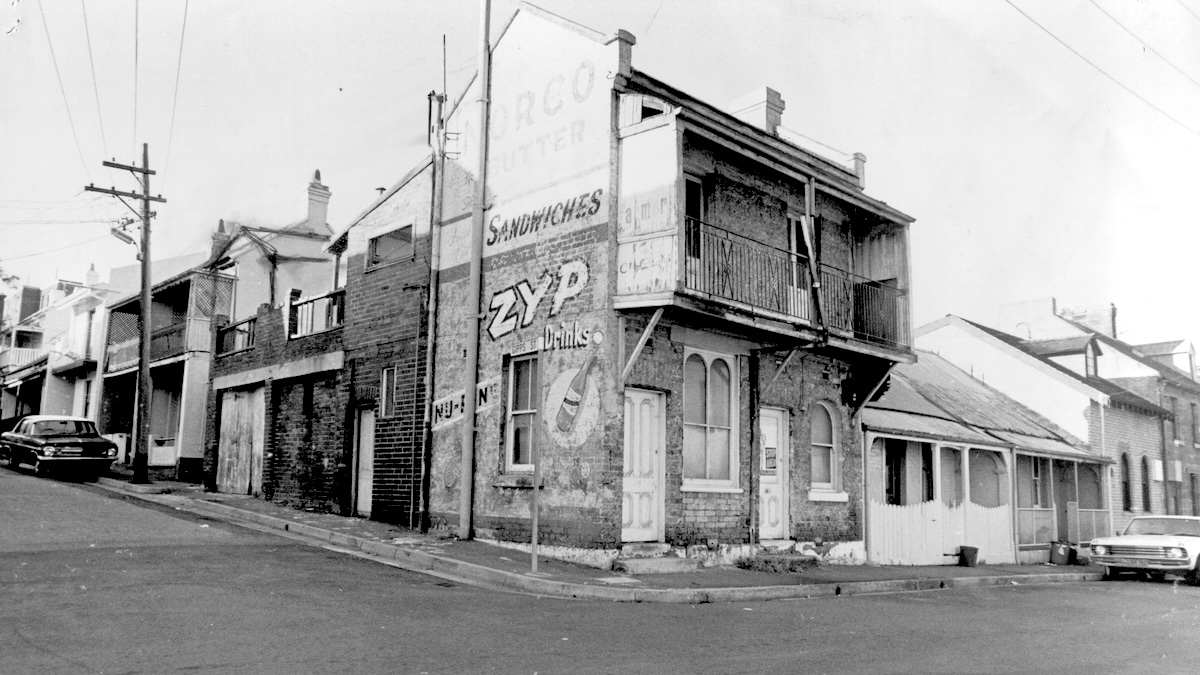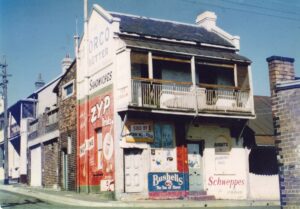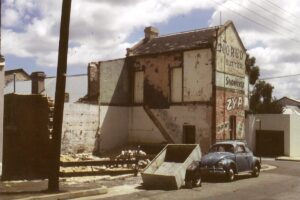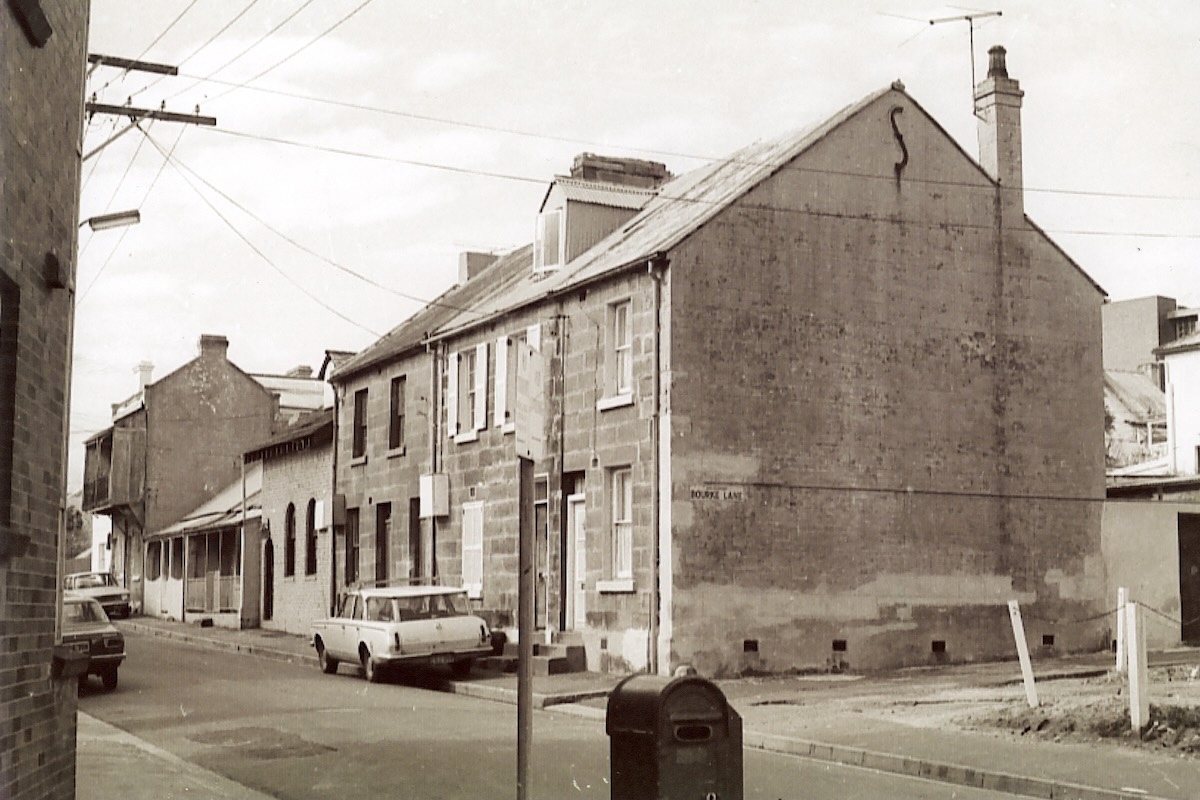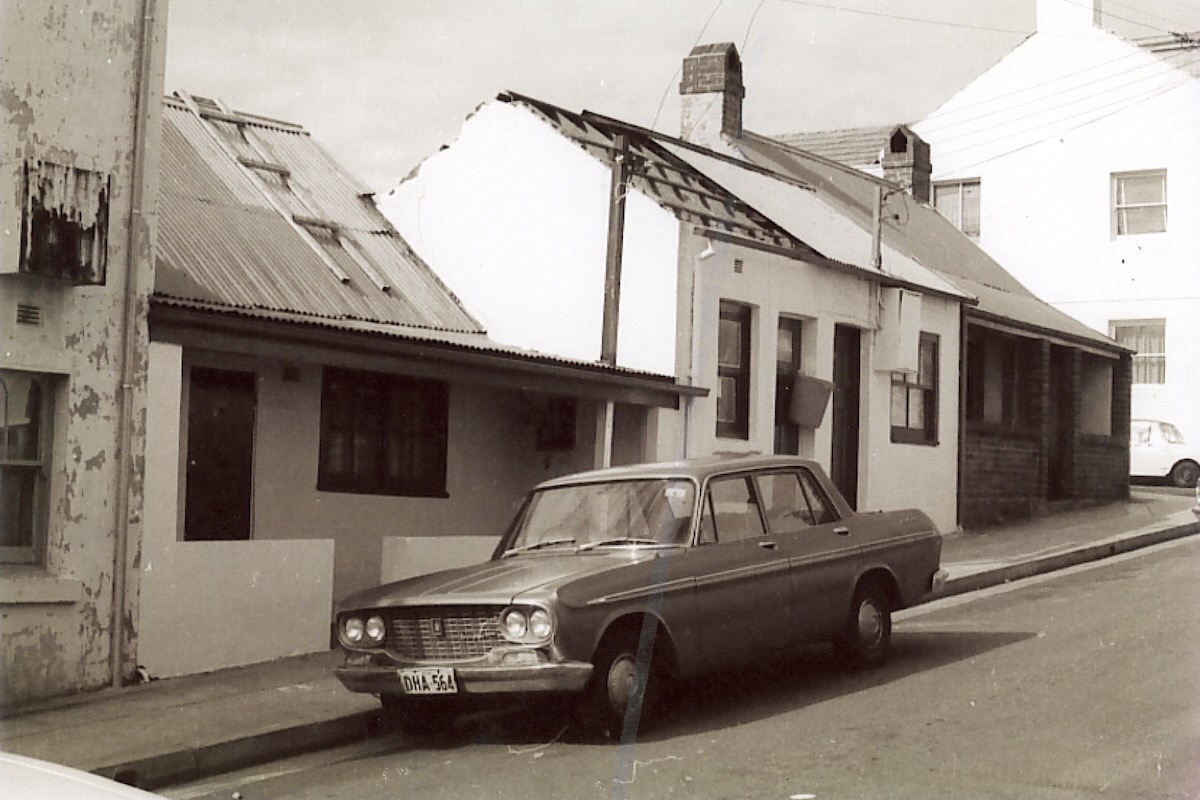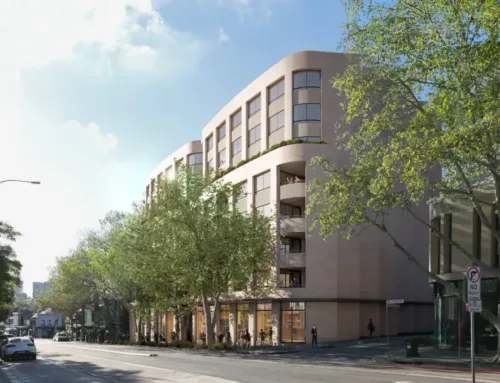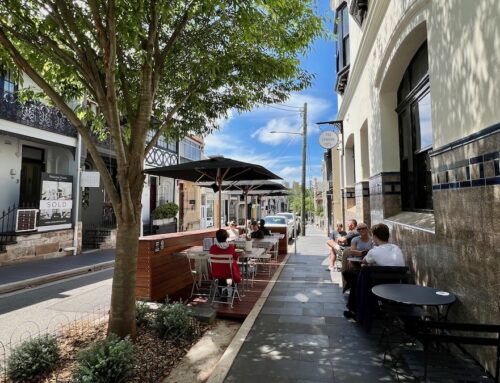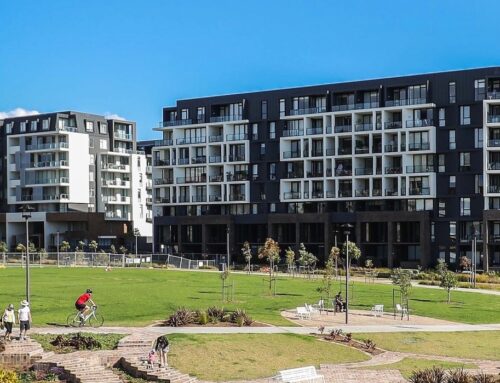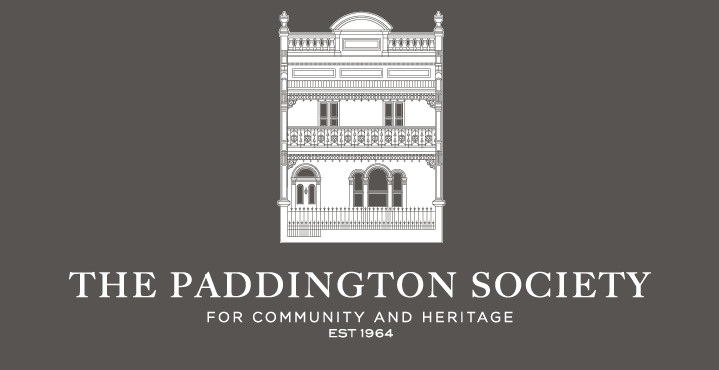Jeff, an architect by trade, had bought an abandoned, termite-ridden, crumbling corner shop on Shadforth Street. “Floors would collapse if you stood in the middle of the room and the fibro construction of rooms and walls was flimsy at best.” He estimates the shop was built in the 1870s.
“Most houses were abandoned; some didn’t have roofs or doors…”
The street was not much better. “Most houses were abandoned; some didn’t have roofs or doors. Three quarters of the street was unliveable,” Jeff says. When asked what was his attraction to the property, Jeff says “The price”. “I paid £3,750 for the property; around $7,000. You could buy anything in the street for that kind of money.”
A decade of patience
Jeff couldn’t live in the house right away. “It sat empty for years as I couldn’t afford to fix it up,” he says. It wasn’t until around 1970 that he began serious renovations. Over time, he dismantled and rebuilt much of the home – retaining as much of its charm as possible.
Originally the house had two tiny rooms upstairs and a shop downstairs. The buildings on Gipps Street were store rooms and garages for the shop. Jeff pulled down much of the interior of the house, preserving the two walls on the corner and opening up the ceilings to the pitch of the roof.
The original brickwork was plastered over so he patiently chipped it off to reveal beautiful sandstock bricks beneath. He then collected similar bricks from all over Sydney to repair the rest of the property. Today you can see the faint outline of the sign for Zyp drinks on the wall facing Gipps Street.
A strong community
Jeff enjoyed living in the local community. “Most of the men worked on the wharves,” according to Jeff. “If they weren’t working, their wives would kick them out the house in the morning, and they would sit on their front steps until the pub opened at 10am. Then back home at lunchtime and then back to the pub. Half of them were on strike most of the time, with an armoured vehicle regularly visiting the street so they could collect their allowances.”
“There was a real village feel to it, even if the village was falling apart.”

Fruit seller, corner of McLaughlan Place and Gipps Street, Paddington c1970, J. Jonas [click to enlarge]
Planting life back into Paddington
One of Jeff’s contributions to Paddington’s renewal came in the form of trees. When he moved in, there wasn’t a single tree in the suburb. “The council manager with responsibility for plants said trees wouldn’t grow in Paddington – wrong kind of soil, he says.” But Jeff, with an architect’s determination, disagreed. “I dug the holes myself. It was clay underneath. I knew trees would grow.”
Jeff initially planted jacarandas in the street, but soon realised their wide spread wasn’t suitable for narrow footpaths and switched to a more compact species – Acer negundo or box elder. He also recommended the planting of jacarandas for Victoria Barracks, while working for the government in the 1960s on repairs to the buildings.“…council … said trees wouldn’t grow in Paddington – wrong kind of soil…”
In 2010, when the council wanted to remove the Golden Robinia in Shadforth and Gipps Streets, Jeff suggested islands for the planting of the new Chinese tallow trees. “It adds greatly to the beauty of the street,” he says.
“I worked with the Paddington Society on the campaign to preserve the area…”
A lasting legacy
Paddington has changed greatly since the 1960s. “They wanted to pull the suburb down and put up red-textured brick apartments. I worked with the Paddington Society on the campaign to preserve the area,” Jeff says.
Thanks to Jeff and people like him, Paddington’s character — its grit, charm, and spirit — is preserved in bricks, trees, and stories.
See more of Jeff’s great photos of Paddington below.
Editors Notes:
- If you have short stories about the history of your property and the community, contact the Paddington Society so we can add it to the archives of one of the world’s most famously preserved Victorian suburbs.
- Jeffrey Jonas, interview by Judy Hitchen, 4 July 2025, 19 Shadforth Street, Paddington
